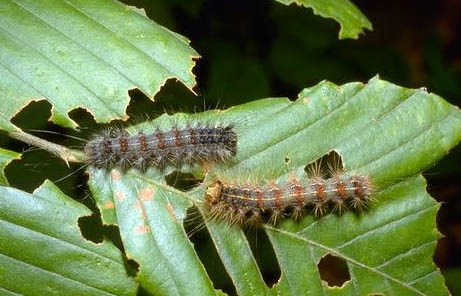October 7, 2010

The California Department of Food and Agriculture (CDFA) and the Ventura County Agricultural Commissioner’s Office have announced the eradication of the European gypsy moth infestation in the Ojai area.
The infestation was originally detected in 2007 when four moths were found in an insect trap. Additional moths, egg masses, and larval cast skins were found in the area in 2008.
The infestation was eradicated using applications of Bacillus thuringiensis kurstaki (Btk), an organic treatment that uses a naturally-occurring soil bacterium against the pest.
“I am grateful to the residents of Ojai, and to the Ventura County Agricultural Commissioner’s Office for their cooperation and participation in this important project,” said CDFA Secretary A.G. Kawamura.
“We are committed to using the safest means available to control and eradicate invasive pests such as the gypsy moth. This program is an example of what we can achieve when we work together to protect our environment, habitat and food supply.”
The eradication project was designed with input from environmental, health, and forestry officials. A series of three treatments were applied in Spring 2009 after extensive trapping and surveys determined the specific area of infestation.
The treatments were made on plants within 400 meters from each site where the moths had been detected. After the treatments, monitoring traps were placed over a nine-square-mile area and checked every two weeks.
Traps were redeployed in spring 2010 with no additional gypsy moths detected.
Gypsy moths deposit egg masses on vehicles and outdoor equipment plus on trees, buildings, and other surfaces. Some egg masses and cast skins found in the Ojai infestation were on and near a camping trailer that had originated in an infested area in the Northeastern United States.
The gypsy moth arrived in North America from Europe in the late 1800s. Millions of caterpillars emerge each spring and devour large swaths of forest and foliage. When trees are repeatedly defoliated, they are more susceptible to other pests and diseases, possibly leading to tree death and an increased potential for fire and erosion.
Gypsy moth caterpillars are a major pest of forests and landscaping trees, feeding on hundreds of plants, and are capable of defoliating trees at an alarming rate.
A single gypsy moth caterpillar can eat up to one square foot of leaves per day.
Young larvae feed primarily on oaks, aspen, birch, willows and alder. Older larvae feed on a broader range of trees including cedar, pine, spruce, and fir.
Common California species including manzanita, western hemlock, Douglas fir and live oak are also prone to damage by this pest.
You May Also Like




